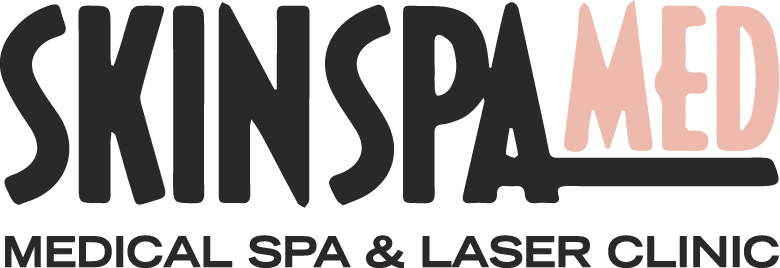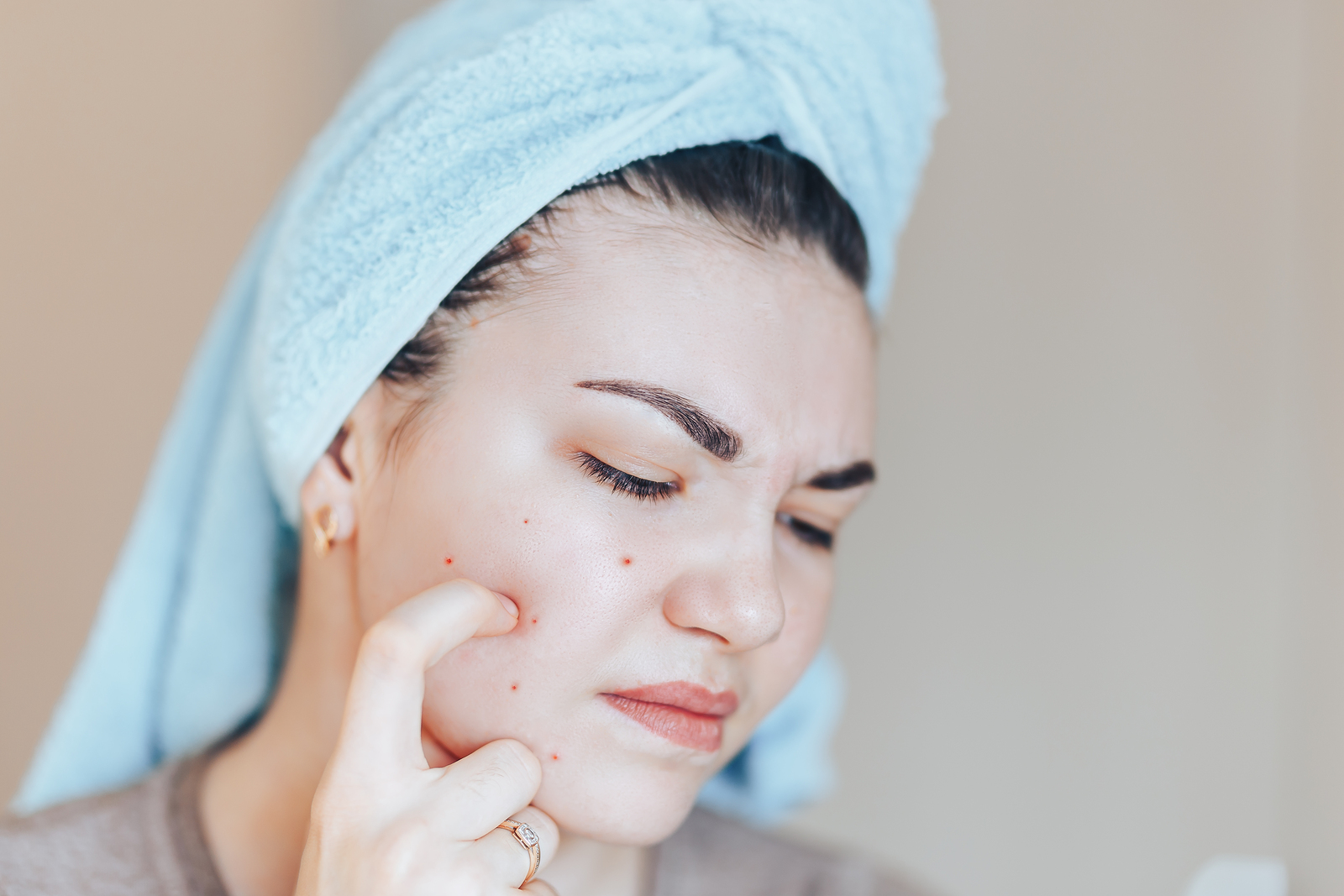How A Chronic Skin-Picker Created a Sane, Affordable Skin Care Routine
/I recently came across this New York Times article by Tessa Miller that chronicled her quest to find a skin care routine that not only benefited her physical health but mental health as well. It’s amazingly written and I wanted to share it with you all:
I needed to be out the door 15 minutes ago for a friend’s bachelorette party- or was it 30 minutes ago? Instead, I sat cross-legged on the floor before a closet mirror, picking and squeezing and scratching my face- thinking that if I could just “get this gunk out,” I’d be able to quell my anxiety and leave the apartment. I wasn’t sure how much time had passed, but when I finally surveyed the damage, my face was bloody, swollen, and hot to the touch. In a trance-like state, I’d been digging at my skin for an hour and half.
Now came the shame: coming up with an excuse to bail on the party. Cycling through product after product to minimize the damage rendered. Worrying about scarring. Skipping even more social and work events until I deemed my face “presentable” again.
And after all that, it wouldn’t be long until I’d be in front of the mirror again, trying to extract spots visible and invisible until I was again bloody, swollen, ashamed.
Everyone pick once in awhile, and that’s totally normal- popping the occasional zit, tweezing an ingrown hair, prodding at a scab. But according to the TLC Foundation for Body-Focused Repetitive Behaviors (B.F.R.B.s), 2-5% of the population “picks their skin to the extent that it causes noticeable tissue damage and marked distress or impairment in daily functioning.” The clinical term is excoriation disorder, but it’s also called skin picking disorder or dermatillomania, and the Diagnostic and Statistical Manual of Mental Disorders, 5th Edition (D.S.M.-5) classifies it as related to Obsessive-Compulsive Disorder (O.C.D.). 75% of those affected by skin picking disorder are female (hi).
“Some people have underlying social anxiety and pick as a way to relieve stress or distract themselves before a social event,” said Dr. Ryan Howes, a psychologist who practices in Pasadena, Calif. said. “Others may have deep-seated problems with body image, and the picking is an attempt to make perfect the visual imperfections. Some experience clinical levels of O.C.D. or generalized anxiety and it’s an outlet for anxious thoughts. And for some, on an unconscious level, picking may be a way to avoid intimacy.”
I’ve been picking my skin since I was 11 and I didn’t seek help until I was 24- about six years ago. I still get the urge when I’m especially stressed, but now I have plenty of tools at my disposal to halt the cycle before it starts. Even if you aren’t a clinical-level picker like me, some of these strategies can be incorporated into your own routine. (Remember that skin is unique and what works for me might not work for you. Always talk to your doctor first!)
First, know when and who to ask for help
The first member of your care team should be a mental health professional. “If you’re feeling ashamed, if you’re less likely to leave the house because of it, or if you’re starting to wonder if it’s a problem, it wouldn’t hurt to speak to a psychotherapist,” Mr. Howes said. The TLC Foundation has an excellent database of providers who treat B.F.R.B.s, as well as information on support groups and other services. The go-to treatment for B.F.R.B.s is Cognitive Behavioral Therapy (C.B.T), said Dr. James Bender Jr., director and co-founder of the Reeds Center in New York City. C.B.T., he said, “teaches a person skills to break the habit and better control the urges to pick the skin.”
Another crucial member of your team is a dermatologist, who can treat underlying conditions that exacerbate picking. These days, insurance covers most dermatologic visits (minus any cosmetic treatments), and you can find a doctor in your network through apps like Zocdoc. With insurance, I usually pay no more than $20 when I visit my dermatologist. “I try to figure out what (the patient’s) life is like and what it feels like to them in circumstances that lead to picking,” Dr. Libby Rhee, a dermatologist who practices in New York, tries to figure out what her patients life is like, and what circumstances lead to picking. “I address the inflammation on the skin with either topical or oral medication, and make sure our goals are aligned- for them to not have anything on their skin that they want to pick,” she said.
If it’s in your budget, a licensed skin care specialist called an aesthetician can also help by clearing the skin- simply put, the fewer things there are to pick at, the less picking there will be. “Aestheticians can act like a type of skin care counselor,” celebrity aesthetician and skincare expert Renee Rouleau said, “teaching clients how to better understand the repercussions of picking and why it can be damaging to the skin.”
It’s also vital to connect with other people with skin picking disorder, said Jennifer Raikes, executive director of the TLC Foundation. “It can be a huge relief- really life-changing- to be able to get to know other people who share this struggle,” she said. The TLC Foundation holds an annual conference for B.F.R.B.s for people of all ages living with skin picking.
Stick to a minimal routine
Keeping my routine minimal is critical. It keeps me from cycling through product after product, spending mass amounts of cash on lotions and treatments and masks that likely won’t help at all. I quite literally bought into the idea that good skin care had to be expensive, but my daily routine is cheaper than ever and my skin is healthier than ever (so suck on that capitalism!) Talk to a dermatologist about your skin type and the ingredients that will be most beneficial for you. Be open with them about your budget and ask about drugstore alternatives and in-office samples. (Oh, also: always patch test any new product before slathering it all over your face.)
Ms. Rouleau recommends a routine with just four steps, all of which can be customized to your specific skin need and budget:
An alcohol-free cleanser to remove dirt and makeup (a.k.a. the stuff that leads to breakout, which can urge you to pick).
A hydrating toner that balances the skin’s pH and supports your skin’s barrier, or its outermost layer.
A treatment serum, which is thinner that moisturizer and offers ingredients for specific skin issues (like the hyperpigmentation left over after you pick, for example).
A moisturizer, which hydrates and again, protects the skin’s barrier. Ms. Rouleau recommended a moisturizer that doubles as serum.
Notice that harsh spot treatments are left out. “Patients often use drying or irritating spot treatments out of desperation,” Ms. Rhee said. “This further complicates the problem by leading to skin that’s more susceptible to irritation and physical inflammation, which perpetuates the cycle.”
You might benefit from a prescription, too, depending on what your health care provider suggests. I take a selective serotonin reuptake inhibitor (S.S.R.I.) to manage my underlying O.C.D. and anxiety, as well as a pill called spironolactone to decrease my hormonal breakouts.
Avoid information overload
The internet is full of recommendations for casual and chronic pickers alike- so much so that it gets overwhelming (and expensive) quickly. Instead of scrolling forum after forum and filling up your online shopping cart with products that won’t help, “the short answer is: see your dermatologist,” Ms. Rhee said.
“It breaks my heart because I know every patient wants to stop picking, but scouring the beauty aisles will not provide the answer.”
Build a personal emergency tool kit
Ms. Rouleau, a former skin picker herself, offers clients out-of-the-box solutions like a “no picking contract” taped to a mirror, or an accountability partner you can contact in a moment of weakness. “Call or text a friend to help prevent you from picking at that skin of yours. Being accountable to someone else will help those horrible habits when you’re not feeling your best self,” she said.
“One way to think about anxiety is that it’s ‘extra energy’ to help you deal with real or imagined stressors,” Mr. Howes said. “Exercise, deep breathing, or yoga can be powerful tools.” Something like a stress ball, a fidget spinner, or a pimple-popping toy (I have one and it’s disgustingly satisfying) can redirect your fingers from your face. You can even try wearing gloves or snapping a rubber band on your wrist every time you go to touch your face.
My absolute favorite time to stop me from picking is a hydrocolloid patch. I’ve been know to shamelessly wear 10 of these clear circles at a time, covering each spot I’m tempted to pick. If you’ve already picked a spot, these magical little stickers aid in healing, too. “Post-picking, you want to keep your skin in a moist environment for optimal healing,” Nava Greenfield, M.D., a dermatologist who practices in Brooklyn, said. “Aquaphor is great until the skin is healed and then Bio-Oil or a silicone gel as a scar prevention.”
Remember, it’s not your fault
Brains are mysterious and make us do all sorts of weird- and sometimes unhelpful- things, like picking, to deal with stress and anxiety. “Habits reside within neural networks that don’t listen to reasoning and can be very resistant to change,” Mr. Bender says.
So as easy as it is to beat yourself up about picking your skin, remember that, first, it’s O.K. if you can’t stop on your own, and second, there is good help available. “There’s no reason to blame yourself for having this,” Mr. Howes said. “Just like you need antibiotics to fight an infection, medical or mental health treatment for skin picking is exactly what will help. There’s nothing to be ashamed of.”
(Originally published by The New York Times)




